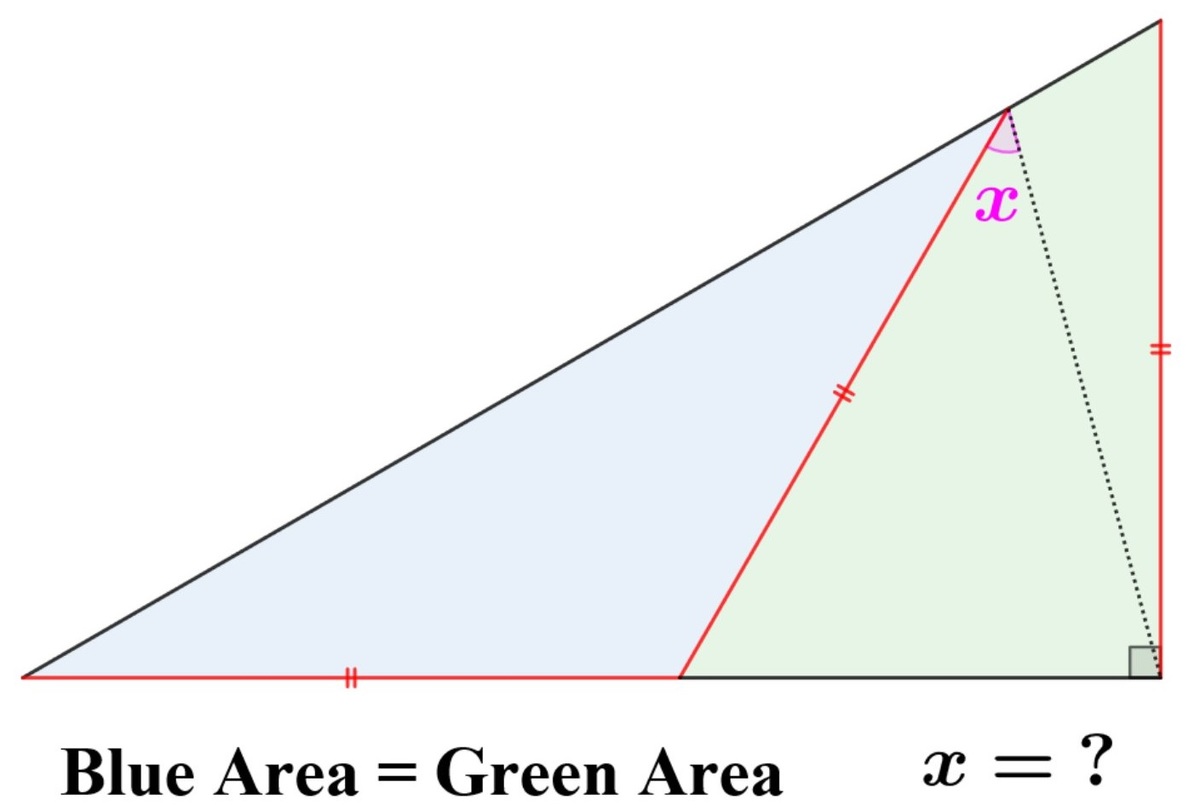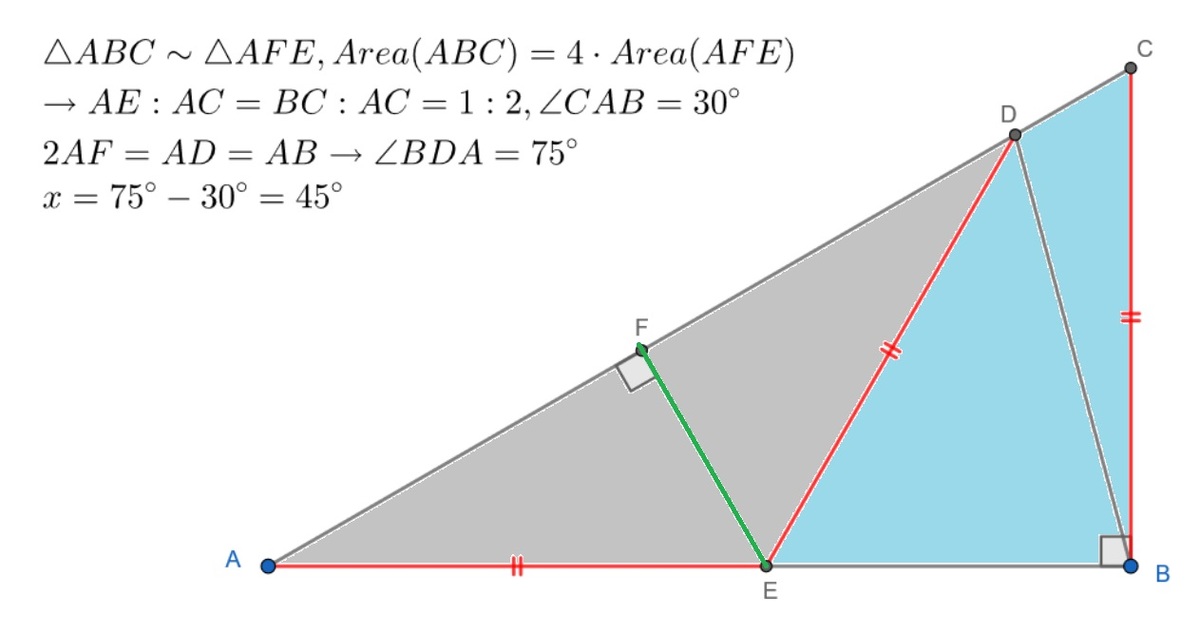This section requires Javascript.
You are seeing this because something didn't load right. We suggest you, (a) try
refreshing the page, (b) enabling javascript if it is disabled on your browser and,
finally, (c)
loading the
non-javascript version of this page
. We're sorry about the hassle.


(Solution by David Altizio and Elijah Liu)
Let the diagram be as labelled:
We claim that △ A C B is 3 0 ∘ − 6 0 ∘ − 9 0 ∘ . To prove this, let F be the D -altitude of A D E . Then, △ A D F ∼ △ A C B due to AA similarity. We also note that △ A D F is a quarter of the area of the original triangle. Thus, we can conclude that the two triangles have a ratio of similitude of 2 .
Note that A D = B C , and A D is a hypotenuse whereas B C is a leg. From this, we can conclude that both triangles are 3 0 ∘ − 6 0 ∘ − 9 0 ∘ triangles.
Next, we claim that △ A E B is isosceles. It is clear that A B = 3 B C and A D = B C . Applying length ratios, we get that A F = 2 3 B C . Because A E = 2 A F , A E = 3 B C and the claim is proven.
It remains to angle-chase. It is not difficult to realize that ∠ E D B = 6 0 ∘ and ∠ A E B = 3 0 ∘ + x . Since the angles in a triangle add up to 1 8 0 ∘ , we get that ∠ D B E = 1 2 0 ∘ − x . Then 3 0 + x = 1 2 0 − x , so x = 4 5 ∘ .